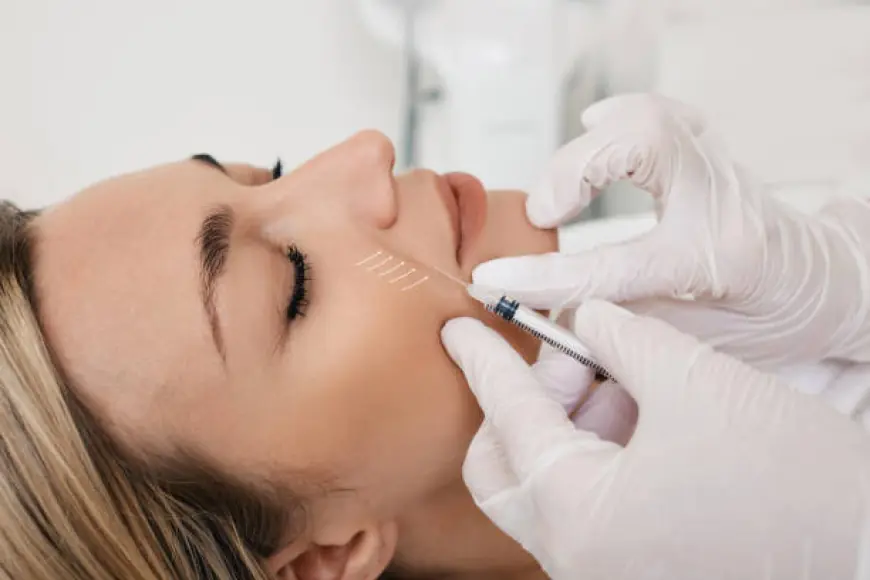Side Effects of Dermal Fillers in Islamabad
Side Effects of Dermal Fillers in Islamabad

Dermal fillers are a popular choice for individuals in Islamabad seeking to restore volume, smooth wrinkles, and enhance facial features. While the procedure is generally safe and minimally invasive, it is crucial for patients to be aware of the potential side effects. These can range from common, mild, and temporary reactions to rare, but serious complications. Understanding these risks and choosing a qualified practitioner is paramount for a safe and successful outcome. Enhance your natural beauty and restore youthful volume with expertly administered Dermal Fillers in Islamabad.
The most common side effects of dermal fillers are typically localized to the injection site and are temporary. These include:
-
Bruising and Swelling: This is the most frequent side effect. The needle used for injection can cause minor trauma to the blood vessels, leading to bruising. Swelling is a natural response of the body to the injection and the presence of the filler material. These side effects usually appear shortly after the procedure and can last anywhere from a few days to a week. Applying a cold compress to the area immediately after the treatment can help minimize both bruising and swelling.
-
Redness and Tenderness: The treated area may appear red and feel tender or slightly painful. This is a normal part of the body's inflammatory response and typically subsides within a few days.
-
Itching: Some patients may experience a mild itching sensation at the injection site. This is usually a temporary reaction and can often be managed with over-the-counter antihistamines, as advised by the practitioner.
-
Lumps and Bumps: Small lumps or bumps can form under the skin. In most cases, these are a temporary result of the filler material settling and can be resolved with gentle massage by the practitioner. However, if the filler is injected too superficially or in an excessive quantity, it may cause more persistent irregularities.
While the above side effects are common, there are less frequent but more serious complications that can occur. These risks underscore the importance of choosing a highly skilled and experienced injector.
-
Vascular Occlusion: This is the most feared and serious complication. It occurs when dermal filler is accidentally injected into a blood vessel, blocking blood flow to the surrounding tissue. This can lead to tissue death (necrosis), severe pain, and in very rare cases, blindness if the filler reaches the retinal artery. A skilled injector with a deep understanding of facial anatomy knows how to minimize this risk. Signs of a vascular occlusion, such as unusual pain, a mottled or pale appearance of the skin, or a bluish discoloration, require immediate medical attention.
-
Infection: While rare, a bacterial infection can occur at the injection site. This risk is minimized by performing the procedure in a clean, sterile environment. Symptoms of an infection include increased redness, swelling, warmth, and tenderness, sometimes accompanied by pus or a fever.
-
Allergic Reaction: Allergic reactions to dermal fillers are uncommon but can happen, especially with older, non-HA fillers. Symptoms can range from mild redness and itching to a severe reaction like anaphylaxis, which is a medical emergency. A thorough pre-treatment consultation to discuss any known allergies is crucial.
-
Filler Migration: In some cases, the filler material can move from the intended injection site to another area of the face. This can result in an unnatural or asymmetrical appearance. It is more likely to occur with certain types of fillers or if too much product is used.
-
Granulomas: These are small, firm inflammatory nodules that can form around the filler material. They are a delayed reaction that can appear weeks or months after the injection. They may require specific treatment to be resolved.
To minimize the risks of dermal fillers in Islamabad, patients should take several proactive steps. First and foremost, select a board-certified dermatologist or plastic surgeon with extensive experience in injectable treatments. A qualified professional will perform a detailed consultation, assess your medical history, and discuss the procedure and its risks in detail. They will also use only high-quality, FDA-approved fillers and maintain a high standard of hygiene. Following the practitioner's post-treatment care instructions, such as avoiding strenuous exercise and sun exposure, can also help ensure a smooth recovery and optimal results.
What's Your Reaction?
 Like
0
Like
0
 Dislike
0
Dislike
0
 Love
0
Love
0
 Funny
0
Funny
0
 Angry
0
Angry
0
 Sad
0
Sad
0
 Wow
0
Wow
0
























































